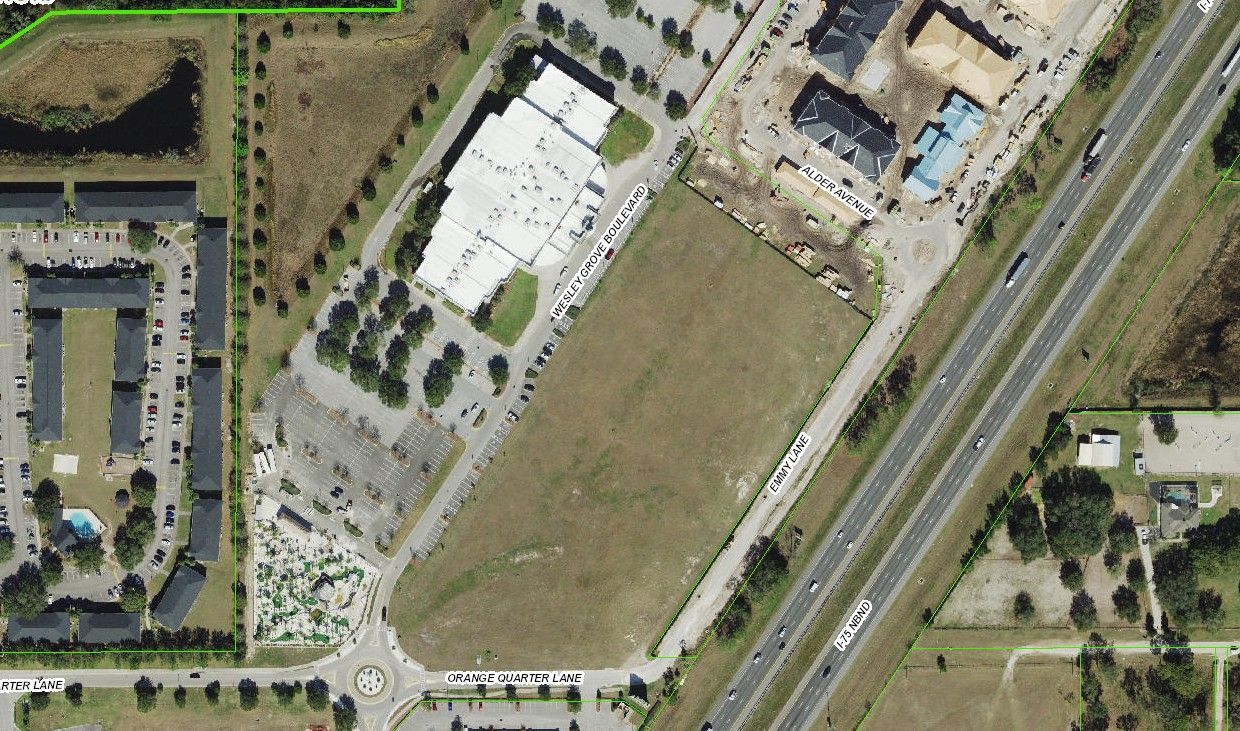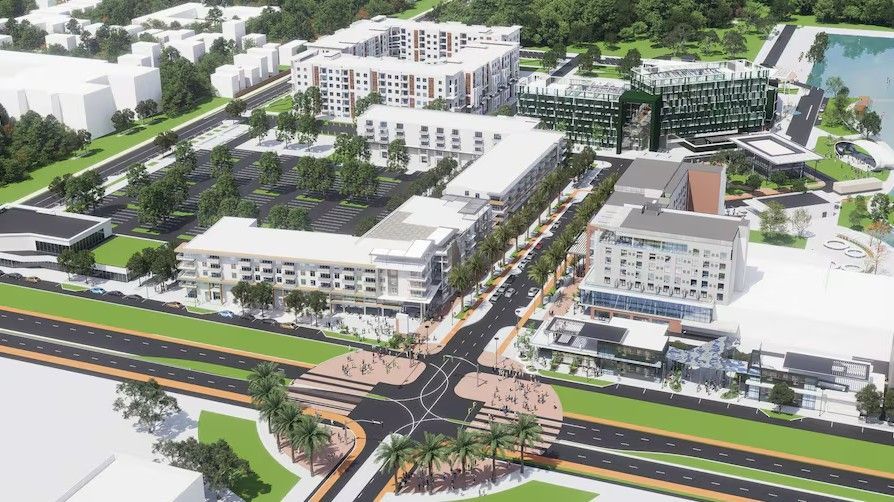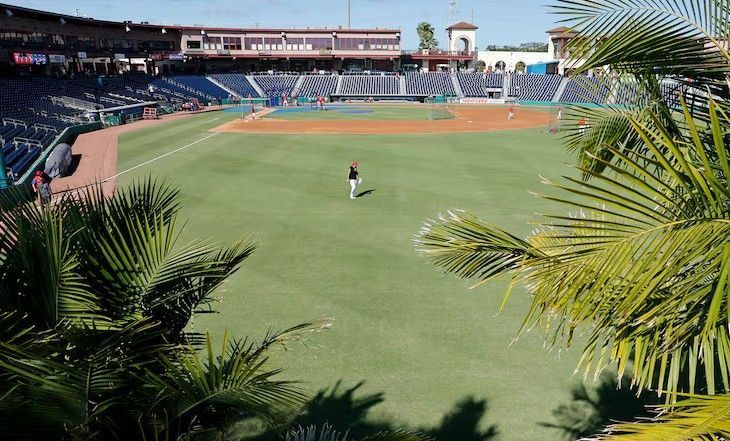A look at Florida's Multifamily Market
Florida Multifamily Outlook: Navigating Rent Growth and Supply Pressures in 2025
As we settle into Q2 of 2025, Florida's multifamily sector continues to demonstrate both resilience and volatility amid national economic uncertainty and shifting federal housing policy. The March 2025 data from Yardi Matrix provides a deeper look into how key Florida markets—like Tampa, Miami, Orlando, and Jacksonville—are stacking up against national trends.
Tampa’s Multifamily Market: Holding Steady Under Pressure
Tampa experienced a modest 0.8% year-over-year rent growth as of March 2025, bucking the trend of negative growth seen in other Florida metros. However, supply-side pressure remains significant: Tampa delivered 5.7% new inventory relative to total stock in the past 12 months—one of the highest delivery rates in the country.
Despite this, job growth in Tampa held at a healthy 0.8%, keeping demand relatively stable. Rent growth for the rest of the year is expected to soften, with forecasted gains of only 0.4% by year-end.
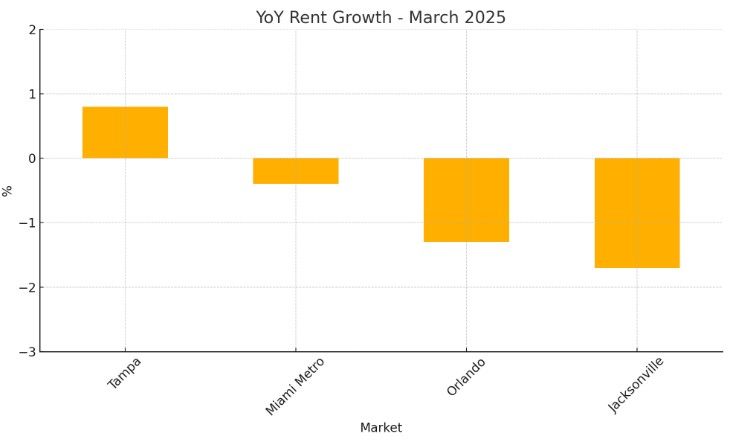
Miami, Orlando, and Jacksonville: Cooling Rents Amid Heavy Supply
Other major Florida metros are experiencing more pronounced challenges:
- Miami rents fell 0.4% YoY, but expectations are slightly more optimistic, with a 1.4% increase forecasted for the year. Still, new deliveries make up 4.4% of stock—a major contributor to short-term softness.
- Orlando reported -1.3% YoY rent growth, with 6.0% new stock added—placing substantial downward pressure on rents.
- Jacksonville, which has been a consistent performer historically, slipped 1.7% YoY with no reliable forecast data available for YE 2025.
A common thread across these metros is aggressive inventory expansion without proportionate demand increases—especially as affordability remains a growing concern.
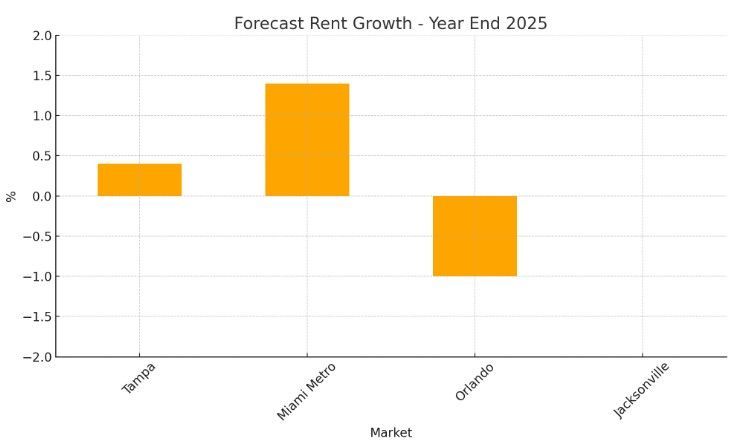
What This Means for Investors and Developers in Florida
The Florida multifamily market remains a strong long-term play thanks to favorable demographics and inbound migration, but short-term returns may vary significantly by submarket. Investors need to pay close attention to local fundamentals, particularly:
- Supply pipeline saturation
- Occupancy trends
- Employment momentum and wage growth
Metros like Tampa with strong fundamentals may weather current conditions better than others facing steeper declines like Orlando or Jacksonville.
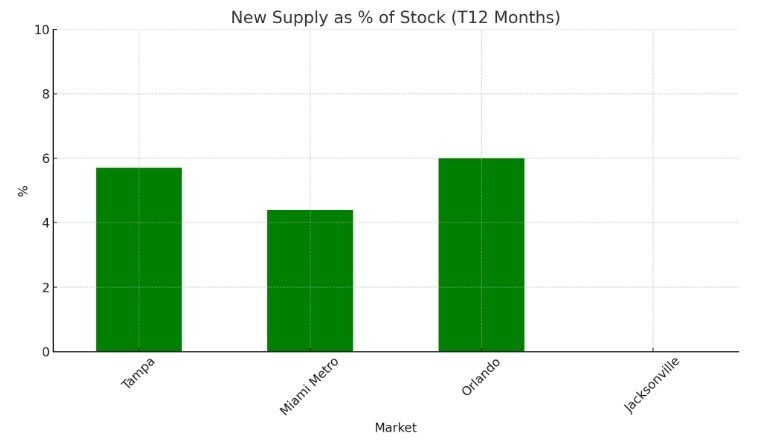
Final Thoughts
At Cliggitt, we’re closely tracking the balance of supply and demand across Tampa Bay and Florida to help investors, developers, and property owners make smart decisions in a rapidly evolving market. Whether you're navigating leasing strategies, repositioning assets, or exploring new acquisitions, we're here to help.
Thank you for your interest. Have questions regarding the local market? Navigate the Real Estate Market with confidence, and contact us at Cliggitt Valuation for your appraisal, consulting, and valuation needs today.
Mike Cliggitt, MAI, MRICS, CCIM
813.405.1705 | 863.661.1165 - Direct Lines
findvalue@cliggitt.com
Appraisal & Valuation Markets
Questions about our blog? Contact our Director of Sales & Marketing, Sydney Avolt.
Sydney Avolt
727.403.7418 - Direct Line
SHARE CONTENT
